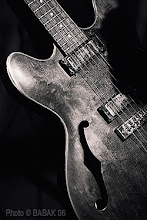Music Instruments
Woodwind instruments are distinguished primarily by the fact that the effective length of the vibrating air column is shortened by opening lateral side holes in succession. Two distinctly different means of generating the sound are employed. For the flute, and its half size version the piccolo, the player blows across the embouchure hole near one end in such away as to cause periodic puffs of air to enter the tube; after a turbulent turning these puffs excite the air column longitudinally. This good method of excitation leaves the tube acoustically open in the sense that the contained air vibrates much as it does in a simple tube with both ends open to the atmosphere.
Brass instruments
The brass instrument consists of a cup shaped mouthpiece, a slightly tapered mouth pipe, cylindrical tubing including valves, and a roughly hyperbolic bell. Puffs of air are introduced by the player via vibrating lips stretched over the mouthpiece. The action is comparable to that of the clarinet, in that the mouthpiece end is nearly closed acoustically. The length of the air column is increased by tubing switched in by use of valves, either piston or rotary: a common arrangement is such that the first valve lowers the intonation by two semitones, the second by one semitone, and the third by three semitones.
Stringed instruments
For the guitar and harp, strings are set into vibration by plucking for the other stringed instruments the vibration is usually initiated and maintained by bowing. The frequency of vibration is primarily established by the length, tension, and mass per unit length of the string. A string vibrates not only at the lowest frequency, but also at the same time at higher frequencies which tend toward integer multiples of the fundamental frequency. The sound radiated from the instrument is thus complex.The radiation of music from a stringed instrument is enhanced by a resonator consisting of an almost closed air cavity. Some of the energy of the vibrating string is transmitted via the bridge to the walls of the cavity. In a carefully constructed violin the resonances of the air cavity and its vibrating walls are distributed in frequency in order to afford a relatively uniform response throughout the playing range of the instrument.
Keyboard instruments
Instruments such as the celesta, pipe organ and piano are usually put in a group called keyboard instruments, because the respective vibrating bars, pipes and strings in these instruments are selected by use of keys in a keyboard. The celesta and piano could also be described as percussion instruments, because hammers strike the bars and strings; the pipe organ and the accordion, with its wind-driven free reeds, are wind instruments. By its multiple keyboards the pipe organ puts under the control of a single player thousands of sources whose distinctive sounds can be reproduced on command.
Electrical instruments
Electrical musical instruments produce electrical tone signals for amplification without using mechanical vibrators or air columns. Early electrical instruments predated electronics, generating their tone signals by electromagnetic or electrostatic rotating machinery. Later, most of the instruments became electronic, producing their tone waves from vacuum-tube circuits, then transistor circuits, and non integrated electronic circuits. Many different means of sound generation have been used during the evolution of electronic musical instruments. In concept at least, the simplest electronic method would be to substitute directly for each conventional mechanical or acoustical sound source an electronic circuit source or software algorithm that generates the same complex tone wave. However, in different parts of the musical scale the waveform typically differs for the same instrument. Moreover, keyboard instruments require that a number of tones be produced at the same time.











No comments:
Get the latest update via Email. It's Free.Subscribe Now